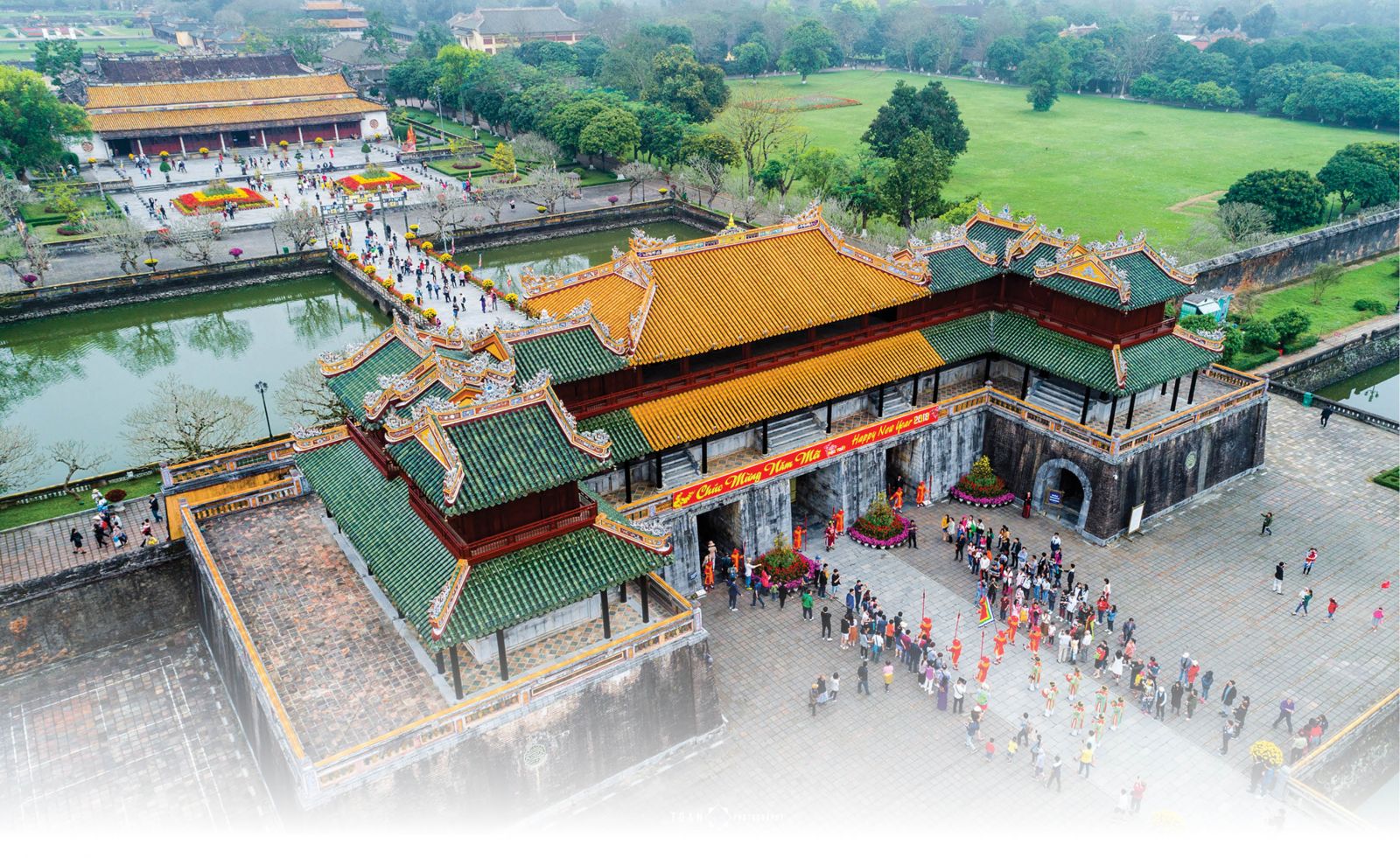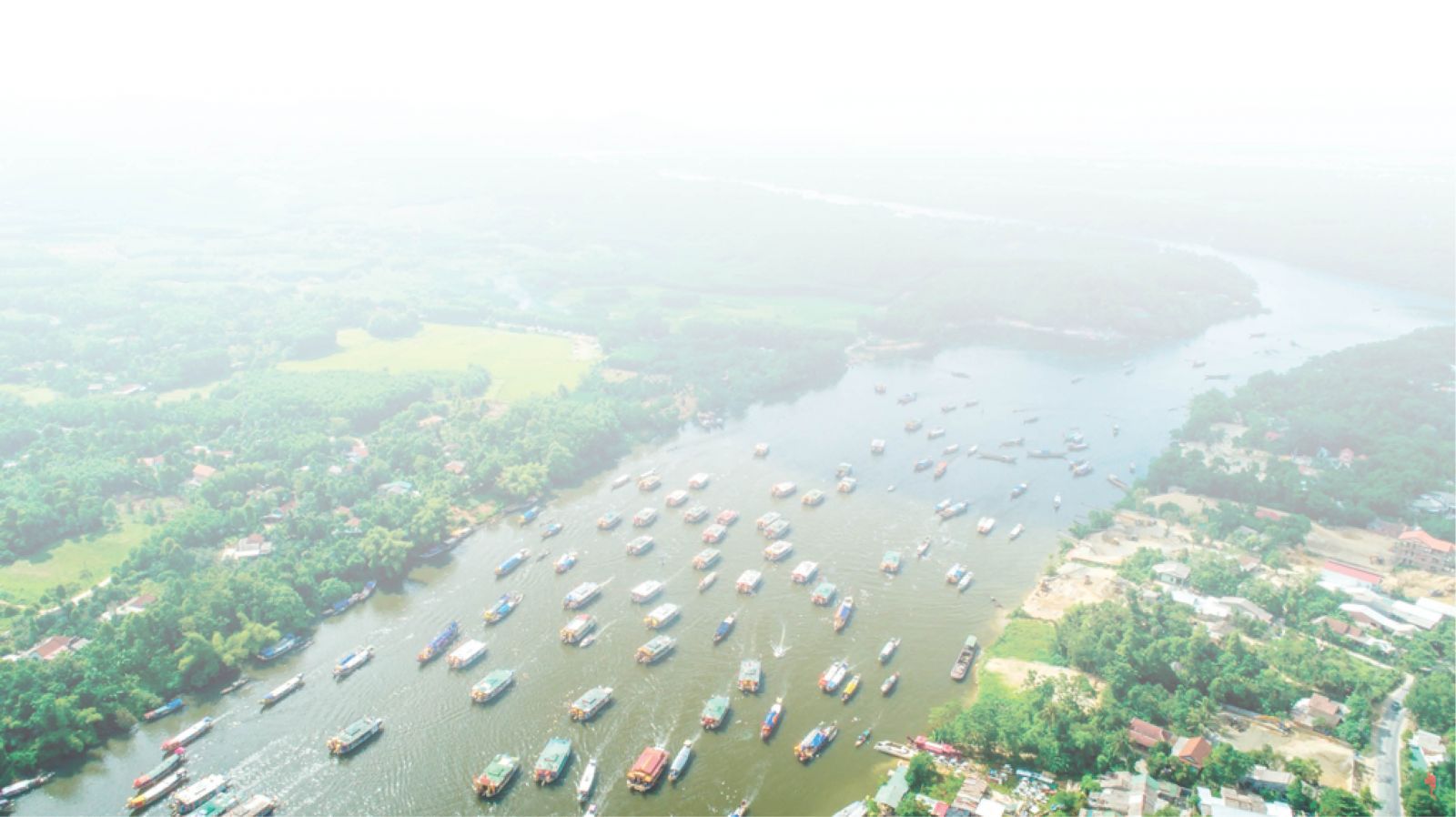
The panoramic image of Hue Citadel
How to plan and develop Hue City in the period 2020-2030, with the vision to 2045 becomes extremely important while the government and the party leaders have intended to make Hue a special heritage municipality.
Implementing such a strategic plan requires knowledge and effort of many people with different areas of expertise. More or less, the development of Hue needs the succession of the historical heritage.
Hue City has been planned and built in connection with the Perfume river as an axis since the beginning of the 17th century based on the urbanization process that had taken place hundreds of years earlier related to the process of moving toward the South of Vietnamese people. In 1636, Hue became the main city of the Inner Realm, then the capital city of the Tay Son dynasty (1788-1801) and the Nguyen dynasty (1802-1945).
Accordingly, Hue has been enlarged from the area at the source of the Perfume river to the sea (West-East direction); from An Hoa, Huong So to Ngu Binh Mountain and to Tam Giang and Cau Hai Lagoons (North-South direction). The former Director of UNESCO Amadou Matah M’Bow has highly valued that planning:
“The earlier builders of Hue wanted to plan the city in harmony with the wonderful landscape including Ngu Binh Mountain, Vong Canh Hill, Tam Giang and Cau Hai Lagoons. They created a sophisticated structure in which everything was inspired by nature. Obviously, the beauty of Hue City is supplemented by nature.”
The tangible and intangible heritage, including the culture and landscape of Phu Xuan-Hue, is in connection with the Perfume river as the axis. The most prominent is the complex of monuments of the ancient capital with the Citadel, palaces and the institutions of the Nguyen dynasty in the east (Duong co: belonging to Yang) and temples, royal mausoleums, pagodas, etc. along the river in the west (Am co: belonging to Yin). Besides, there are other very important relics related to the historical periods of the Nguyen Lords’ era such as Thanh Loi, the ancient town of Bao Vinh, the port town of Thanh Ha, the Hoa Chau Citadel, etc.
In planning and developing Hue City, it is necessary to conserve important cultural monuments along that axis. Enlarging the city, which we are doing now, is a suitable solution which allows us to do the planning and managing of the historical and cultural heritage typical of Hue City.
Right from the beginning, the Nguyen Lords built a political and economic center for the Inner Realm in a unique way that could maximize the strengths of the two regions near Hai Van Pass: the political center in Thuan Hoa where the capital was located, and the economic center in Quang Nam managed by their successors.

Hon Chen Festival on the Perfume River
The two centers were connected by the relation of the international port of Hoi An and Kim Long-Phu Xuan via the domestic port of Thanh Ha. Though Phu Xuan-Hue was situated on the land of Trieu Phong, it was a super city as the center of the whole area from Quang Binh to Phu Yen. The other Nguyen Lords continued with this perfect formula.
During the Tay Son era, especially the Nguyen era, Phu Xuan-Hue lay on the land of Quang Duc (i.e. Thua Thien). It was the center of the “Five Quangs” (Quang Binh, Quang Tri in the north, Quang Nam, Quang Nghia (i.e. Quang Ngai) in the south. It explains why Phu Xuan-Hue had always been regarded as a big city with a strong potential in many aspects and an ideal place for the monarchies for hundreds of years.
Therefore, planning and developing the whole province of Thua Thien Hue to become a municipality thus need not only to be based on the available tangible and intangible heritage, but also to inherit what have been created by the predecessors.
With this perspective, Thua Thien Hue should be developed in relation with other cities in northern Central Vietnam and southern Central Vietnam, especially with Da Nang and Quang Nam in the south and Quang Tri, Quang Binh in the north. This is logical because the ancient city of Hue is an important part of “the Heritage Road of Central Vietnam” that connects the world heritage sites such as My Son, Hoi An, Hue, Phong Nha-Ke Bang, etc.
Planning and developing Thua Thien Hue based on the succession of the historical heritage will help the city conserve its tangible and intangible heritage as well as its special landscape. In the meantime, it needs to spare space for development including the area inside and outside the central point.
Appropriate strategies and policies will help Thua Thien Hue achieve its aim of becoming a special heritage city _ the first national heritage city of Vietnam.
Story: Dr. PHAN THANH HAI
Photos: THANH TOAN - TRAN THIEN
